

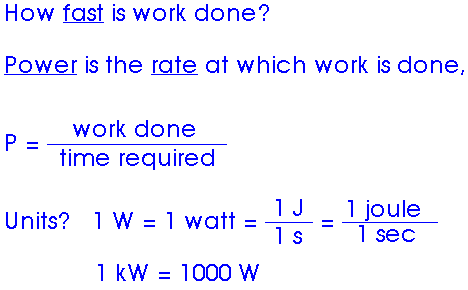
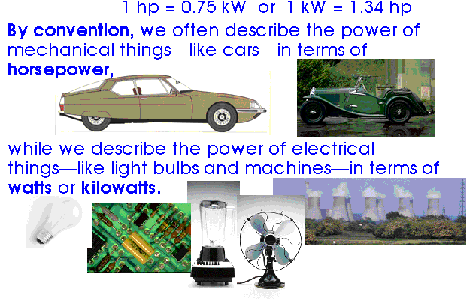
![]()
However, power is power. Either type of units could be used. It would be -- and is -- entirely proper and correct to state that a certain car has an engine which produces 98 kW (that is 132 hp).
As you can see from these graphics from a 1983 Pontiac brochure, General Motors has used SI (International System) units internally for many, many years. Of course, that is true for all other large US companies.
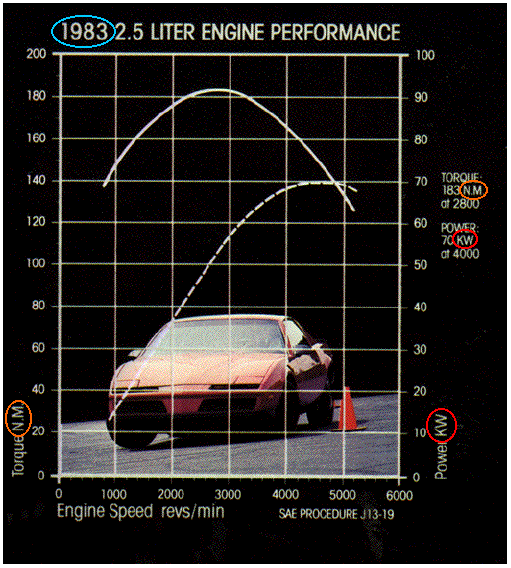
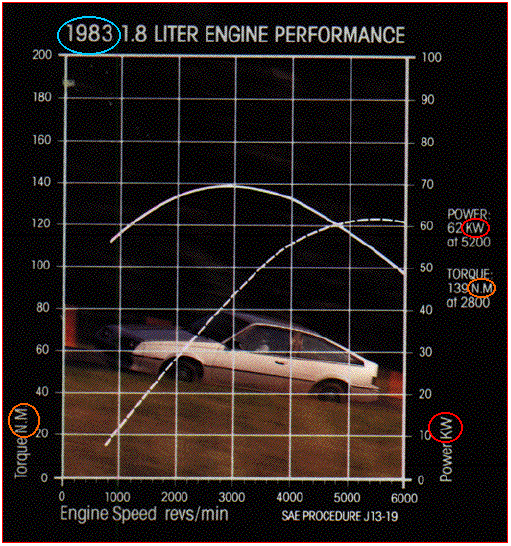
Like the engineers in other multi-national companies, GM's engineers recorded data in SI units. Power is measured in kilowatts (kW) and torque -- the rotational effect of a force -- is measured in newton-meters (NM or N-m). This is not something new; remember these graphics are from a 1983 Pontiac brochure!
Here are excerpts from Francophone Canadian automobile brochures that do, indeed, show the engine power in kilowatts (kW) and in horsepower ("ch" for chavox in French).

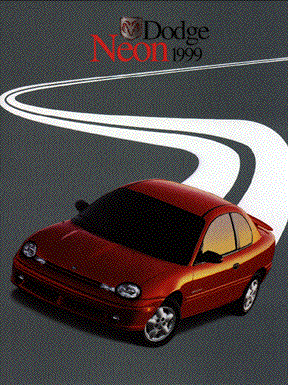


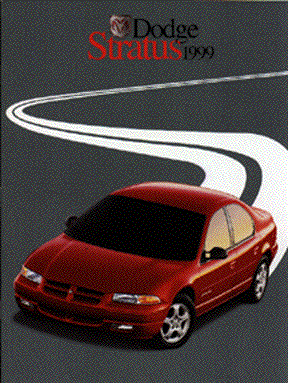
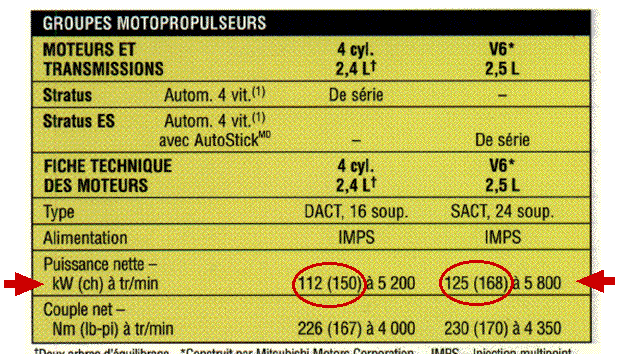
James Watt patented the steam engine in 1769. To sell it, he needed to tell people how many horses it would replace. Watt made the first measurements on how much power a work horse could do -- he measured how quickly farm horses could do work.



Watt was somewhat conservative in his marketing. There are few horses that actually produce one horsepower of power.
(C) 2003, Doug Davis; all rights reserved